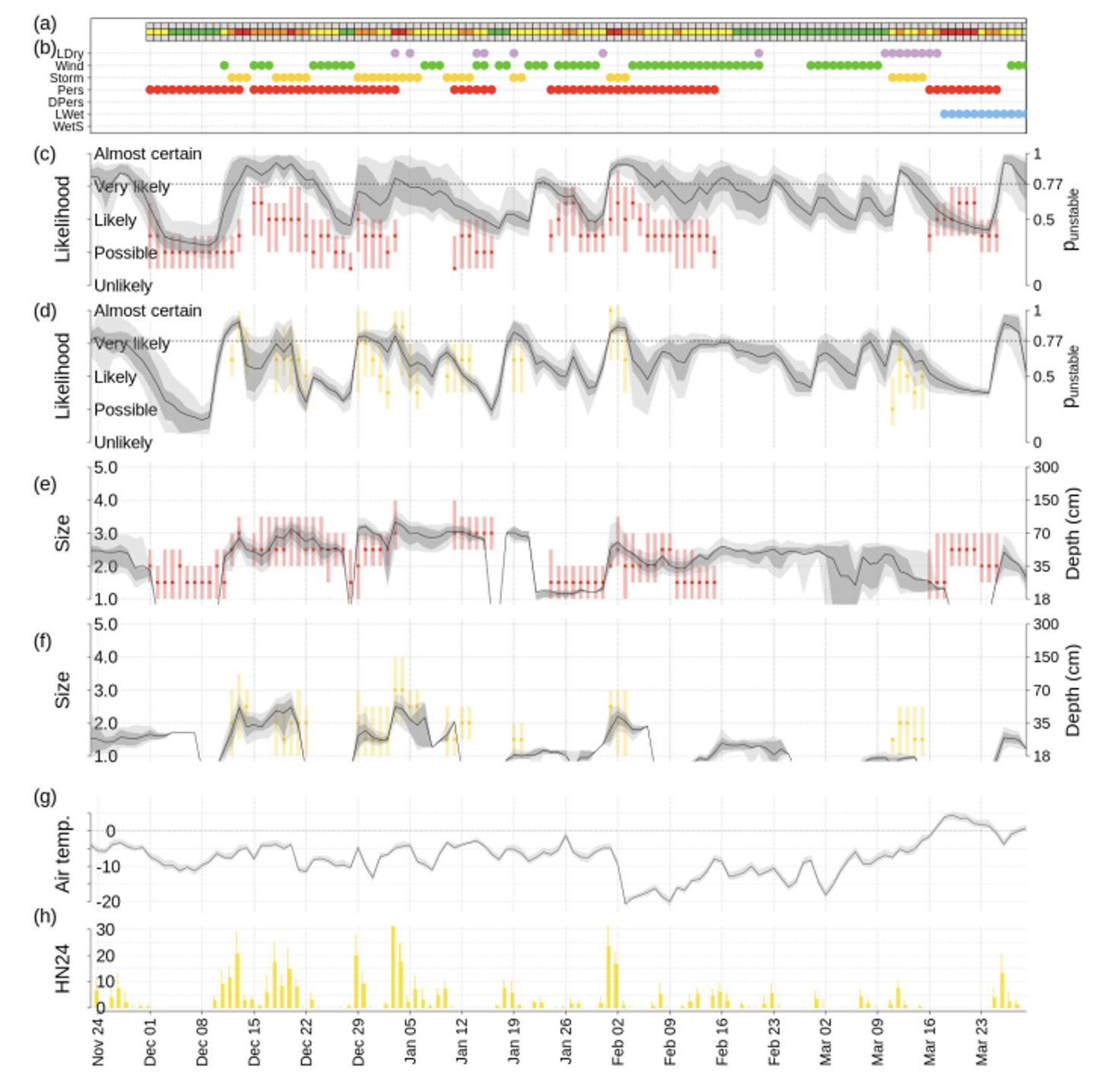
Project Overview
To address forecasters’ concerns about using snowpack simulations in operational avalanche forecasting, this project systematically compared the Canadian regional-scale weather and snowpack model chain against human avalanche hazard assessments over ten winter seasons in three Canadian mountain ranges. The objective was to determine how reliably simulations repre-sent critical layers and avalanche conditions identified by forecasters.
This project developed strategies to identify layers of operational concern in the simulations and also verified whether any additional simulated unstable layers were evident in forecaster assess-ments. Additional methods extracted hazard characteristics from the simulations following the Conceptual Model of Avalanche Hazard. The studies explored seasonal patterns and day-to-day variations to identify how often and in what scenarios the two datasets would agree or show devi-ating predictions. To support continuous integration into forecaster workflows, the studies con-ceptualized dashboards that allow forecasters to compare and evaluate both data sources in real-time to better understand when and how much to trust the simulations.
The research suggests that forecasters generally have a good high-level understanding of the cur-rent hazard conditions. This is represented by a relatively strong degree of agreement of several high-level assessments with the simulated hazard characteristics, such as the danger rating, the awareness of specific weak layers of concern, and to some extent the status of avalanche prob-lems. The simulations can complement this expertise with continuous and nuanced insight into the snowpack, such as detailed and otherwise difficult-to-access information about the temporal evolution of buried weak layers and their response to changing meteorological conditions like new snow loading. Overall, the simulations provide a rich complementary information source that facil-itates critical reflection, offers valuable starting points for targeted observations, and can ulti-mately help forecasters create a more accurate and reliable understanding of avalanche hazard conditions. Although the simulations produce consistent predictions based on the mechanical execution of their mathematical description, they cannot always be trusted due to their strong de-pendence on meteorological input data, which can be highly uncertain. Since human hazard as-sessments represent subjective evaluations for the purpose of risk communication, they are sus-ceptible to human errors and influenced by operational procedures. Hence, we don’t know which data source represents reality better when the two disagree. Future efforts should therefore focus on curating alternative datasets to validate the regional-scale simulations, for example avalanche activity observations.
Involved Researchers
- Florian Herla
- Simon Horton
- Pascal Haegeli
- Patrick Mair (Department of Psychology, Harvard University, Cambridge, MA, USA)
Partner Organizations
Project Funding
Relevant Publications

A quantitative module of avalanche hazard—comparing forecaster assessments of storm and persistent slab avalanche problems with information derived from distributed snowpack simulations

A quantitative module of avalanche hazard - Comparing forecast assessments of avalanche problems with information derived from distributed snowpack simulations

A large-scale validation of snowpack simulations in support of avalanche forecasting focusing on critical layers
Florian Herla, Pascal Haegeli, Simon Horton & Patrick Mair
Validating Snowpack Simulations for Critical Layers
2023 Canadian Avalanche Association Spring Meetings
Click here to view all SARP presentation videos.

